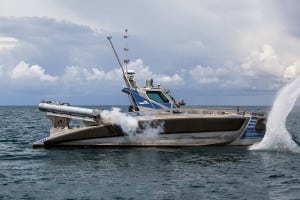
The U.S. Navy and Defense Department's Strategic Capabilities Office (SCO) on Friday released a draft solicitation for the prototype Overlord Unmanned Surface Vehicles (USV) Program.The Navy and SCO are looking to develop and demonstrate the capability to field an independently-deploying autonomous USV. Overlord USVs are planned “to demonstrate an enhanced warfare capability to negatively impact adversaries in a given maritime region.”The SCO is specifically working with the Navy’s Unmanned Maritime Systems Program Office (PMS-406) to manage the Overlord solicitation.The Overlord…

 By
By 











